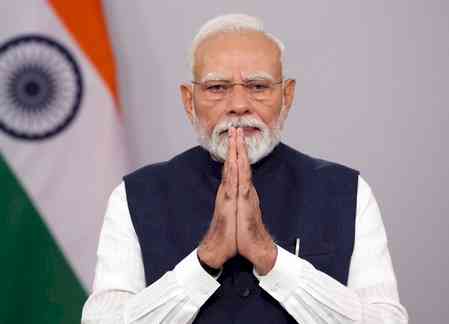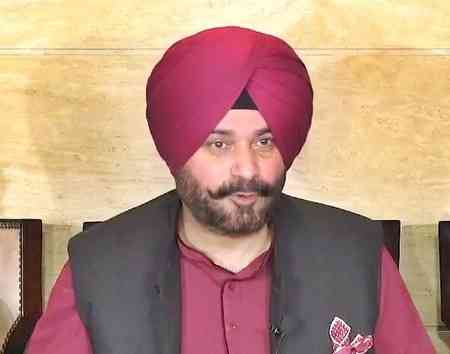Effective warning labels on packaged food reduce salt consumption, major dietary risk factor for hypertension
Experts urge to include warning labels about excessive salt and transfat content on packaged food items to control hypertension

Chandigarh: Soon after testing positive for Covid-19, forty five years old Amanjot Singh’s condition deteriorated rapidly and he had to be placed on a ventilator. Amanjot, like millions of Indians, suffer from high blood pressure which makes them extremely vulnerable to falling severely sick with Covid-19 and even dying. On the occasion of World Hypertension Day, experts issued a clarion call for urgent action to control the high prevalence of raised blood pressure in India. Citing dietary risk factors like excess intake of salt as a major cause for hypertension, leading doctors and public health experts from PGIMER called for strong policy measures such as clear front-of-pack warning labels on processed and packaged food.
“As the consumption of packaged foods increases significantly at all socio-economic levels more during lockdown, it is critical that Food Safety Standards Authority of India (FSSAI) prioritizes establishing clear limits for salt and other harmful nutrients (saturated fats and sugar) as per the WHO regional thresholds- a scientifically validated guide that is best suited to the people of South Asia,” said Dr Chandrakant Pandav, President, Indian Coalition for the Control of Iodine Deficiency Disorders (ICCIDD), popularly known as the ‘iodine man’ of India. Dr Pandav added “Food industry should also commit to and cooperate in this policy effort to make our foods healthier and save lives.”
High blood pressure is responsible for at least 10.4 million deaths and 218 million disabilities adjusted life years (DALY) globally. More than 60% of all deaths in India are due to NCDs and a large number of these deaths are linked to the underlying condition of hypertension. Dr L Swasticharan, (Additional Deputy Director General for Non-Communicable Diseases programme at Ministry of Health and Family Welfare, Government of India) emphasized the importance of behaviour change communication in prevention and control of high blood pressure. “Having information regarding the ingredients of the food we consume, displayed prominently and in a way that is easily understood by people, will make a huge impact. Similar to the pack warnings of tobacco products, front-of-pack labels on food products is the best kind of health promotion, allowing consumers to make informed and healthier choices.” He further added that in recent times India has prioritized population-based screening for NCDs, including hypertension, to widen the net and bring more people under treatment and care in a timely way.
Reducing salt consumption is considered to be one of the most cost-effective measures to lower the risk of blood pressure. With the onset of Covid-19 pandemic last year, it quickly became evident that hypertension and diabetes are major comorbidites. People with high blood pressure, particularly those who did not take regular medications, are at greater risk of becoming severely ill or dying from Covid-19. Several global studies have revealed that if hypertension is a pre-existing condition in Covid patients, the outcome is almost always adverse, including a high incidence of death, said Professor Shailesh Mohan from Public Health Foundation of India.
In a country where an average Indian consumes about 10 gms of salt per day, which is double the WHO recommended amount of 5 gms, reducing the amount of salt in foods is emerging as a critical public health imperative. “Junk food consumption has steadily gone up in our country. Proper laws guiding the upper limits for ingredients of concern such as salt and sugar which are established risk factors for conditions such as hypertension, obesity and diabetes, is the need of the hour. In 2013, an expert committee set up to look into junk food in schools recommended the urgent need for (FoP) labelling. Since then there have been multiple FSSAI committees, but no policy has been issued though this is a critical need to address NCDs,” said leading nutritionist Dr Nancy Sawhney.
Salt reduction is one of the 9 NCD targets proposed by WHO to be achieved by 2025. Recently WHO has published a new set of global benchmarks for sodium levels in more than 60 food categories such as cheese, processed foods etc. A recent study has revealed that globally salt reduction interventions are on the rise. According to the study, countries are beginning to proactively adopt measures such as reformulation of food, front of package warning labels (FOPL). Adoption of clear and simple to understand FOP warnings that enable consumers to make healthier choices, is considered the best investment for better health of countries like India which besides grappling with a high NCD burden, is also rapidly earning dubious fame as world’s obesity capital.
According to Dr. Sonu Goel, Professor at Department of Community Medicine and School of Public Health at PGIMER and lead of hypertension control project in Punjab, “There is enough evidence to show that reduction in salt intake decreases blood pressure levels. For India, which already has such a high disease burden of cardio vascular disease – of the 17.7 million deaths worldwide, India accounts for at least one fifth – modifying salt intake should be a priority. Indians are known to consume more than 100% of the recommended daily limit of salt intake. A lot of this salt comes from processed or packaged food which does not adhere to any limits. Thus, FSSAI should emphasize on urgent adoption of Front of Package Labeling rules on food items.”
In India, an estimated 20 crore adults have hypertension and only 2 crores of them have it under control. A recent study by ICMR has revealed that among people with high blood pressure, only half have been diagnosed and of those, only one in ten have their blood pressure under control. Hypertension, if left untreated, increases risk of a number of serious and potentially life-threatening health conditions like heart attack and stroke, said Dr. Roopa Shivshankar from Vital Strategies.
Increased consumption of ultra-processed foods has contributed significantly to the health epidemic of diet related conditions including hypertension. Research shows that people find it challenging to understand nutritional information displayed on packaged foods. The objective of a Front-of-Package Label policy is to inform consumers in a simple and fast way about the content of sugar, sodium and saturated fat, to discourage the purchase of unhealthy packaged food. Thus far, 11 countries across the world have enacted laws making FOPL mandatory. In 2018 the Food Safety Standards Authority India (FSSAI) published draft regulation for FOPL which was subsequently withdrawn for further deliberation. In 2019 December, FSSAI delinked FOPL from general labelling regulations and is currently seeking consultations with civil society, industry and nutrition experts for a viable model for India. FOPL works best when it is made mandatory and applies to all packaged products, the label is interpretative, simplistic and readily visible, guided by a strong nutrient profile model.


 cityairnews
cityairnews 










